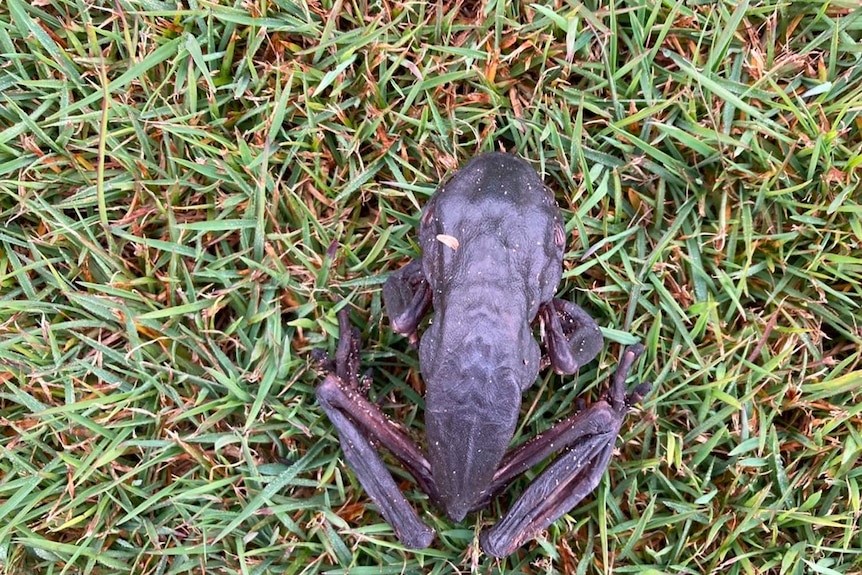Photo courtesy of Sophie Hendry – Brown Skin L. Caerula
Since June 2021, people have been coming across sick and dead frogs in eastern Australia from Rockhampton south, through eastern NSW and down to Victoria. A number of species have been affected including the Green Tree Frog and Peron’s Tree Frog, both species that are commonly seen close to or in our homes.
Initially, it was surmised that this was a result of the cold snap at the start of winter and frogs were succumbing to another wave of the deadly amphibian chytrid fungus which has been the cause of frogs deaths and extinctions around the globe since the 1970s. However, with reports of deaths still coming in scientists have realised this outbreak has the potential to severely affect frog numbers around eastern Australia and are investigating further. Outbreaks of similar magnitudes to what we may be seeing have previously altered food webs permanently in other parts of the world, impacting reptile and bird populations through loss of prey.
The Australian Museum and Australian Registry of Wildlife Health are leading the investigation with help from vets, regionally based amphibian researchers and frog-lovers around Australia. However, they are calling upon help from all Australians to report frog deaths, and uncover the cause.
There are two ways you can assist these efforts. If you see a dead frog, then you should report it. You can send information on dead frogs to the national citizen science project FrogID (run by the Australian Museum) using the email calls@frogid.net.au. Include details of the location and any photos that you have. If possible, please bag the specimen and freeze it, and let the Australian museum know in your email. When lock downs ease, the team hopes to organise collection of these for microbial autopsies to be performed, to better understand the cause of these deaths. Sick frogs should be taken to your local vet. Signs of sickness include being slow to move, thin, and having discoloured skin (lighter or darker than usual). Some frogs have been observed with red bellies, red feet and sloughed skins. Remember it’s always important to wear disposable nitrile or latex gloves when handling frogs regardless of their health.
Another way people can greatly contribute to the investigation is to get outside and record healthy frog calls throughout spring. We are lucky to have over 240 different frog species in Australia all playing an important role in the ecosystem. Frogs are also important environmental indicators, providing humans with messages about the state of our water, habitat and even our soil quality.
As we move into Spring and the weather warms up it’s important to know where we still have healthy and diverse populations of frogs. The easiest way for Landcarers to contribute to this knowledge is using the Australian Museum’s FrogID app https://www.frogid.net.au/ . This great app has information about all of Australia’s frogs in it. Using the app, you can record your local frog calls, and upload them to be identified by a frog expert. The records will be saved in a national database, and you will receive an email identifying the frogs you have heard. It’s also heaps of fun.
Dr Alexandra Knight, Charles Sturt University, Port Macquarie. aknight@csu.edu.au
